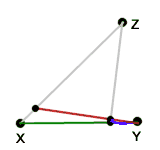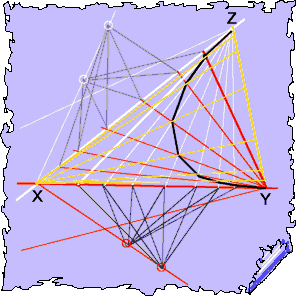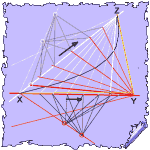Path Curves in the Plane (2)
As we indicated we would, we next track a point stepping on the plane as the intersection of two stepping lines, as illustrated below right
|
—one red, rotating in point Y and guided by a linear measure in the bold white line, below, and —one white, rotating in point Z and guided by another, different linear measure in the bold red line, below. The bold white and red lines share point X, which is also an end-point of each of the two measures. |
 |
The stepping point traces out an invariant path curve.
Notice that it passes from Y to Z and avoids X.
If we were to take another red/white pair,
we would get
another path curve on a different route between the same vertices,
but with
identically the same shape.

